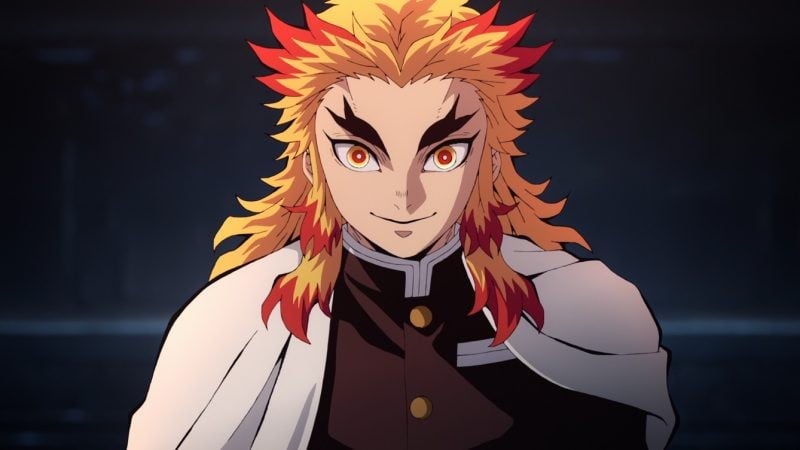Have you ever wondered what the character names of Kimetsu no Yaiba or other elements of Demon Slayer mean? In this article we will study in depth the meaning and etymology of Japanese words in anime.
It is worth noting that the names of the characters in Anime Demon Slayer usually present character characteristics, or sometimes use ideograms in common use in Japanese names.
Let's try to be as technical as possible by presenting several meanings for you to interpret the character's name. It is worth noting that the order of the ideograms in this article follows the same order as the romanized writing.
Table of Content
What does Kimetsu no Yaiba mean?
First of all is the name of the anime called Demon Slayer in English. But its original Japanese name kimetsu no yaiba [鬼滅の刃] means something else.
The word Kimetsu no Yaiba means destroying blade of Oni (demon or other supernatural creature in Japanese mythology). Although [鬼] is usually read as "oni", when combined with the ideogram of destruction [滅 metsu] it reads "ki" becoming kimetsu.
Metsu [滅] is the word that appears on the clothing of the Oni Hunters squad. They are literally Oni destroyers.
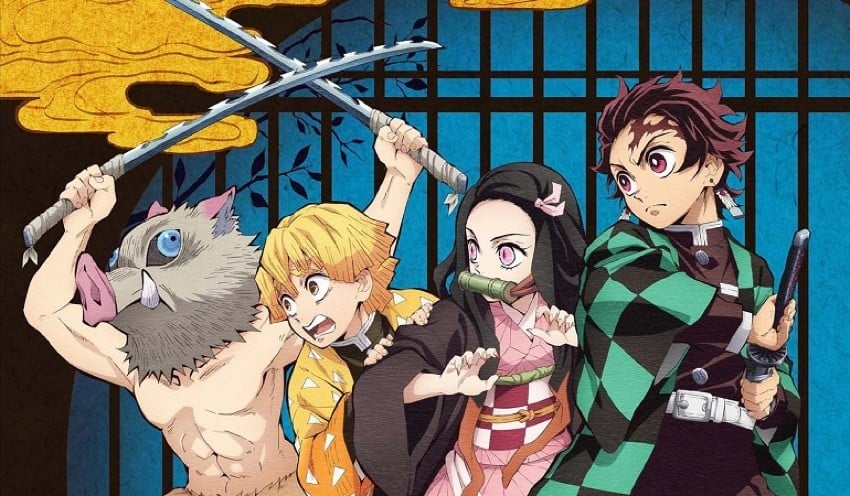
What does Muzan Kibutsuji mean?
The name Muzan Kibutsuji causes curiosity among fans of the series, its pronunciation perfectly matches the character, and his name also has a very interesting meaning.
The name Muzan [無残] well represents the character's personality. It is a Japanese word that means cruel; merciless; atrocious; relentless; cold-blooded; horrible; and miserable.
The Kibutsuji surname [鬼舞辻] seems to be a little complex to understand. The first two characters mean “oni” and dance, but the last one which means crossing doesn't seem to make much sense.
In the table below we will present several meanings of the name Kibutsuji:
| Kanji | Meanings |
|---|---|
| 鬼 | They are beings who live invisible in human society and who have superhuman power. |
| 舞 | Dance, move my feet any way I want; |
| 辻 | Intersection; crossroads; street corner; street |
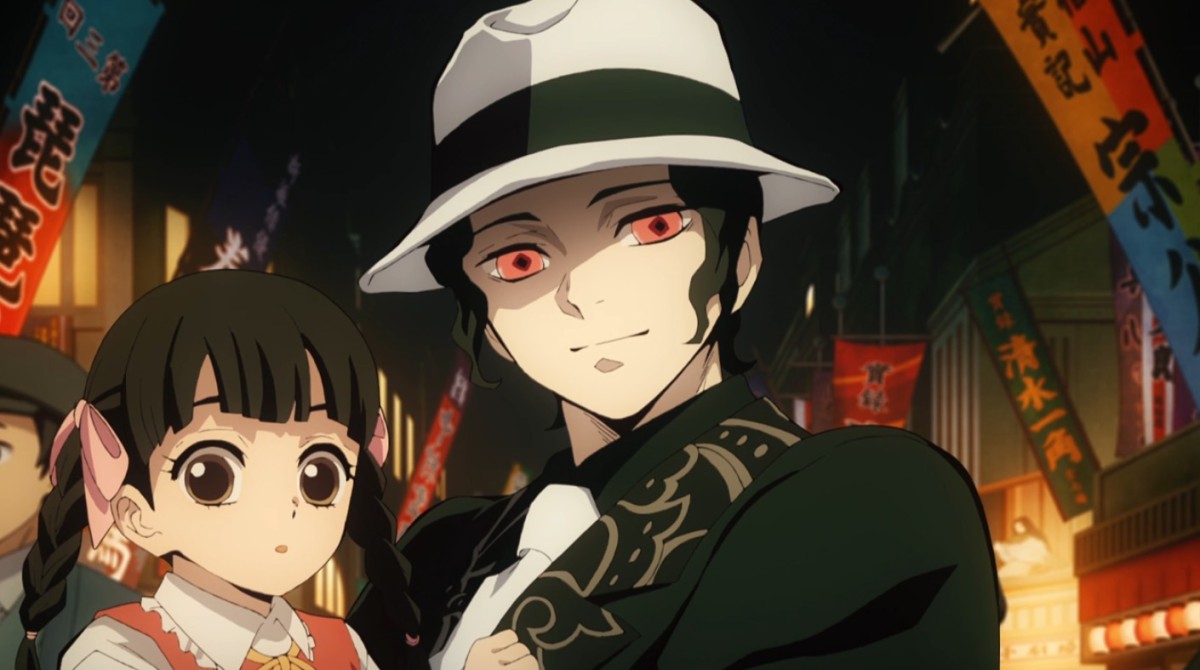
Meaning of the name Tanjiro Kamado and Family
The name of our protagonist Tanjiro Kamado is written [炭治郎竈門] and its meaning well represents Tanjiro's calm and peaceful personality, his coal work and his firepower.
See the meaning of each ideogram below:
| Kanji | Meanings |
| 炭 [Tan] | Coal |
| 治 [Ji] | To be at peace, to calm down, to subdue, to suffocate, to rule, to heal |
| 郎 [ro] | Son, Accountant for children |
| 竈 [Kama] | fireplace, stove |
| 門 [Do] | Gate |
The name Nezuko [禰豆子] some claim to mean "snowball flower" referring to the mountainous region where the Kamado family lives, but examining the ideograms closely, it does not seem to be this the meaning.
| Kanji | Meanings |
| 禰 [Ne] | Ancestral Sanctuary; Sacred Priest; Grasshopper; Place to consecrate precious spirits |
| 豆 [Zu] | Beans, peas, offering |
| 子 [Ko] | Daughter; child |
Below is the meaning of the names of the rest of the Kamado family (first name only):
- Kie Kamado [葵枝 竈門] - Malva branches;
- Tanjuru Kamado [炭十郎 竈門] - Coal, tenth son;
- Sumiyoshi Kamado [炭吉 竈門] - charcoal; good fortune; happiness;
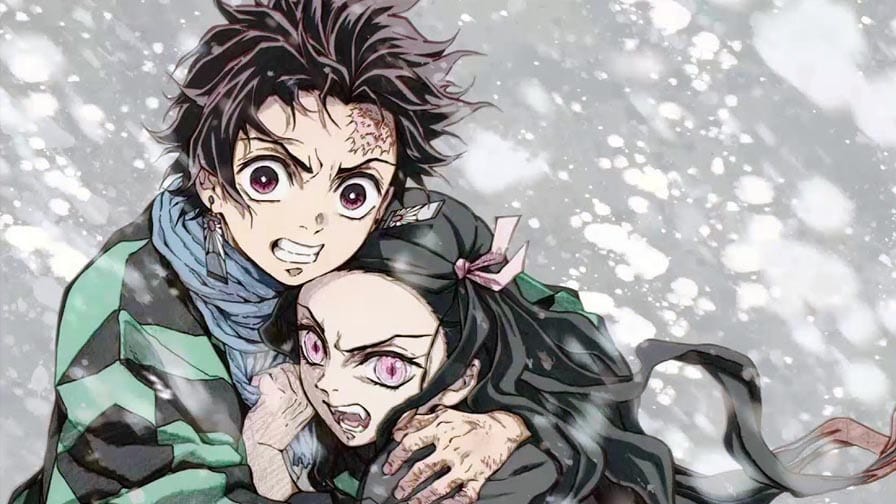
What is the meaning of the names Inosuke and Zenitsu?
Inosuke Hashibira [伊之助 嘴平] - The name Inozuke literally means one who saves, helps or rescues and provides assistance. The ideograms also convey the idea of authority.
Another curiosity of the name is that Ino can also indicate the Japanese word for wild boar which is inoshishi. The first ideogram of the name Hashibira means [嘴] beak while [平] means something common, simple or broad.
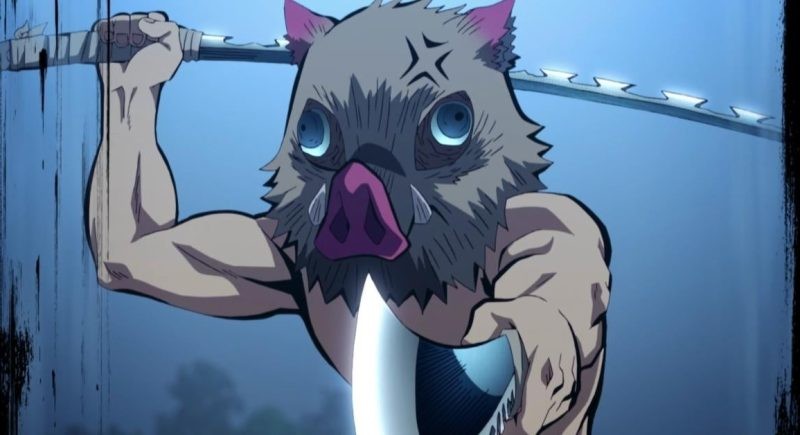
Zenitsu Agatsuma [善逸 我妻] - The first ideogram of the name Zenitsu means Goodness and Kind, while the second ideogram [逸] refers to his fear, as it indicates someone who flees and hides.
Zenitsu's last name refers to his passionate personality towards girls, even alluding to the expression my waifu since the kanji literally mean my [我] wife [妻].

The Meaning of the Hashira Names
Before we talk about the meaning of the names of the Hashira, let's understand the meaning of the word Hashira? The word Hashira is written with ideogram [柱] which means pillar or support, also used as a counter of gods and nobles. They are basically the Pillars of the Demon Slayer corporation.
Now let's see what the Hashira names mean?
Tengen Uzui [天元宇髄]
The name Uzui [宇髄] means something like "center of the universe". Where [宇] means universe in Japanese [宇宙], while [髄] means center of something.
His first name, Tengen [天元] means something like “origin of heaven”. He is an oto bashira (音柱) which means Hashira of Sound.
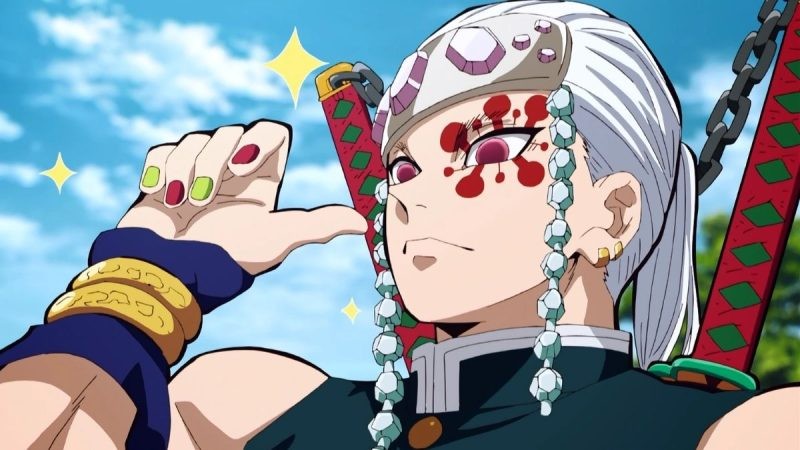
Gyomei Himejima [行冥 悲鳴嶼]
The name Gyomei [行冥] means something like "to advance in darkness." It is composed of the characters [行] which means "to go; line; journey; conduct," and the character [冥] which means darkness.
The name Hime [悲鳴] means “cry that comes from fear or sadness”. Probably because the character is always crying and he has a very sad past. The ideogram [嶼] means island.
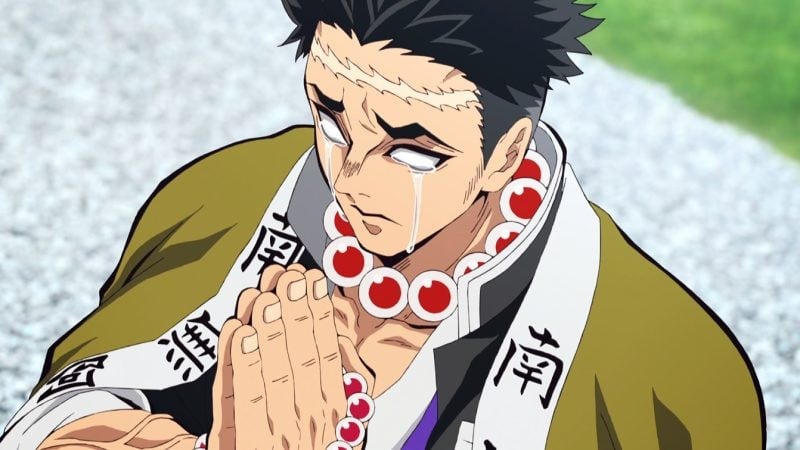
Muichiro Tokitou [無一郎時透]
The character [無] present in the name Muichiro represents something like nothing. Ichiro [一郎] is a very common name among the Japanese and literally means first child. Researching Muichiro's origin we can see that he really had nothing, he lost everything, his brother and his memories.
His family name Tokitou [時透] means "time becomes clearer/shear". He is a Bashira Mist (霧柱). Will your hazy memory get clearer with time?

Obanai Iguro [小芭内伊黒]
The name likely demonstrates his feelings for Mitsuri. Going through the characters, I found that Obanai literally means something like Little [小] Banana [芭] Inside [内].
Where did they put that banana? In fact, this fruit in Japanese culture can mean beautiful memories or everlasting beauty.
The ideogram [伊] of Obanai in Chinese origin refers to a priest who summons God, but it can be translated as "That" while [黒] means black or black. He is a Hebi Bashira [蛇柱] which means Serpent Hashira.
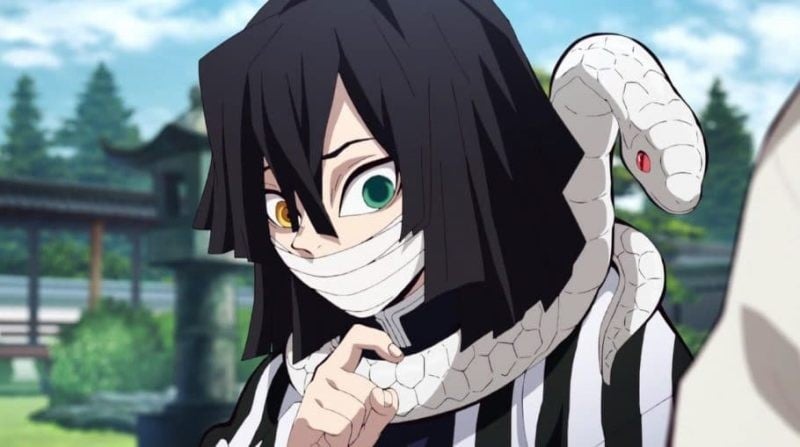
Giyu Tomioka [義勇富岡]
The name Giyu [義勇] is a Japanese word that means heroism; loyalty, and courage. The first kanji means "justice, morality, honor, loyalty" while the second means "courage, bravery, and heroism."
In the name Tomioka, the first ideogram [富] means something like "wealth, abundance" while the second ideogram [岡] means "mountain or hill".
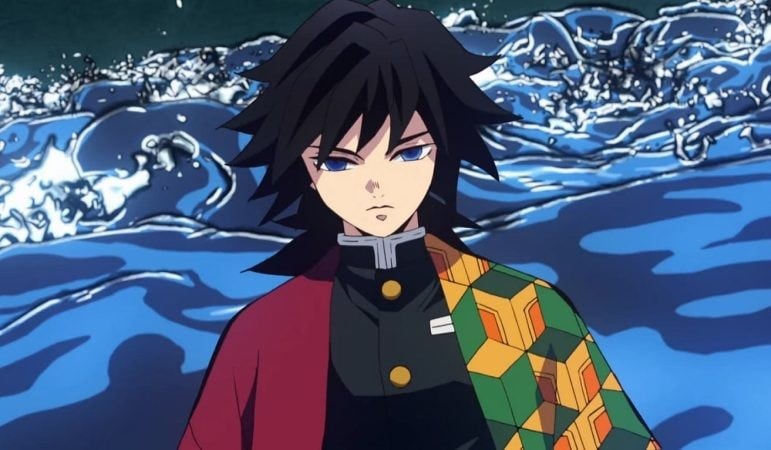
Mitsuri Kanroji [蜜璃甘露寺]
In the name Mitsuri [蜜璃] the first character [蜜] means something like “nectar and honey”, that is, something sweet. The second character [璃] means a glass, crystal and lapis lazuli stone.
In the surname Kanroji [甘露寺], the first character [甘] means something sweet, while the second character [露] means dew, and the third refers to a Buddhist temple [寺].
Mitsuri is a Koi Bashira [恋柱] or a Hashira of love, does the sweet ideogram refer to her loving and passionate personality?
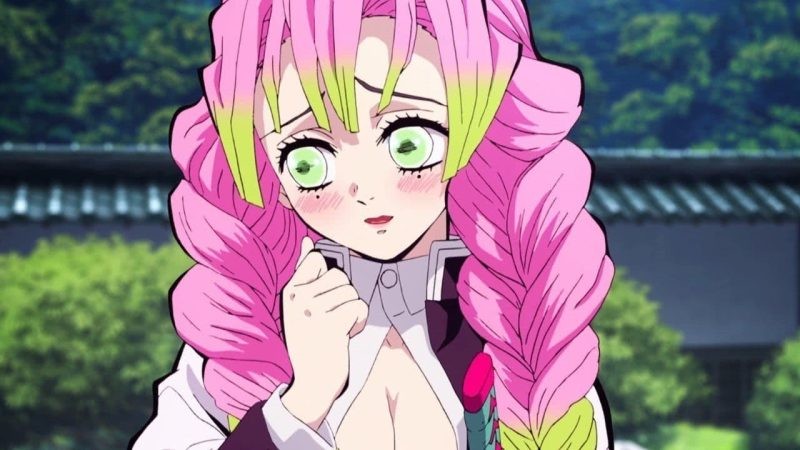
Shinobu Kocho [しのぶ胡蝶]
Shinobu is a Hashira of Insects, her personal name has no meaning, as it is written in Hiragana, but being a common name, it can mean one who hides or refer to a type of fern, but the possibilities are endless.
His surname Kocho [胡蝶] has the first character [胡] that refers to barbarians and foreigners, while the second character [蝶] refers to butterflies, representing well their appearance and power.
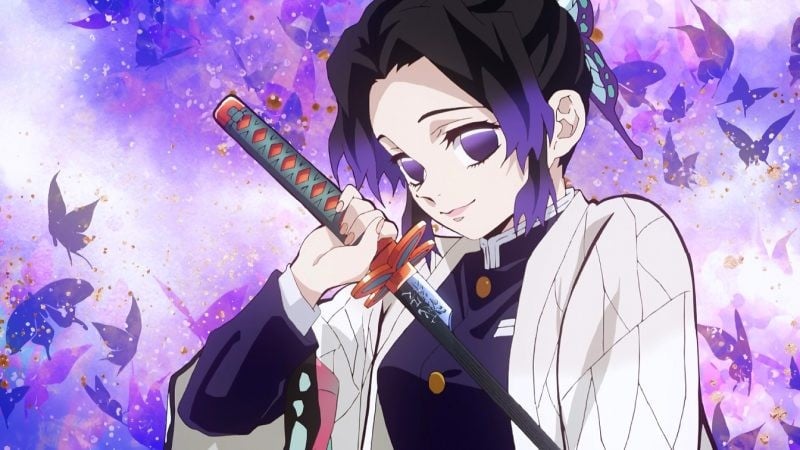
Kyojuro Rengoku [杏寿郎煉獄]
The first character of Kyojuro [杏寿郎] refers to an Apricot, while the second refers to longevity or natural life, while the third is a child counter.
The first ideogram of Rengoku [煉獄] means to refine metals or to beat in fire, while the second ideogram refers to a prison or cage. Together, the two words also mean purgatory.
